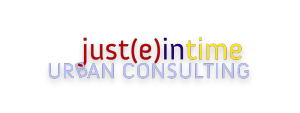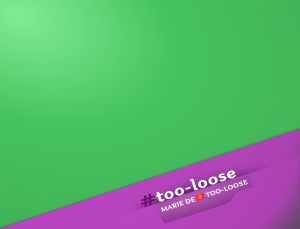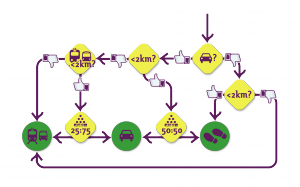Time for an update 🙂
From 9th to 18th July I visited the Complex Systems Summer School in Le Havre in Northern France. The overall theme was “Collective Behaviour and Mobility in Complex Systems” – which I think fits the research for my thesis quite well.
Apart from having a lot of fun there with fellow (PhD) students from all over France and a few also from other countries, I also learned a lot. It’s fascinating how French geography still clings to quantitative methods, while German-speaking human geography scholars usually fear everything slightly adept to determinism as the devil fears holy water. And, finally, what this post is all about: We were to conduct a group project, yielding some kind of complex model.
I was in a group with marvellous people: Claire Lagesse was our conceptional mastermind, Juste Raimbault our young and over-ambitious modelling geek, whom Florent Querini – our “senior” researcher – and I had to slow down a bit from time to time. Nicolas Dugue double-featured as our only professional software engineer and our only professional rock musician, and Bernadette Quinn (whom I did not find a profile online – congrats, you managed to stay out 🙂 ) kept (a) the project’s overall aims and (b) our English language in sight.
After having discussed a lot of technicalities, we figured we would have to have a research question, and not only solutions (in the form of algorithms). We decided upon modelling a transport model of a medium sized city. To have <em>some</em> kind of real-word binding, we chose to simplify the road network of an existing city – Toulouse.
Toulouse has a really nice though a bit too “hip” corporate identity (see their website) – so while our project language had switched to French once more during a heated discussion period, I quickly made a caricature of their logo for our presentation layout. Unfortunately, someone insisted on using Latex later – but was not fluent enough in it to do so nicely … Nevertheless, voíla, here they my slide backgrounds are:
If you want to use them somewhere – feel free to do so 😉
Well, back to our model. We created a network of streets, with population and commodities distributed over the city. Each agent got a set of daily routine journeys assigned randomly, and could choose from different modes of transport:
Funnily enough (no, not really funny, just as expected), our completely thought-up model did not produce expectable results: adding an additional tram line, e.g., would result in even worse congestion on the streets … makes you wonder 😉
Bottom line: It was fun, but did not really make sense.
You can find the model’s source code at: https://github.com/christophfink/UrbanMobilityNew, the slides of our final presentation here, and our “consulting agency’s” logo here:

Really nice to do something “just for the sake of it” 🙂 Looking forward to the next time 🙂


